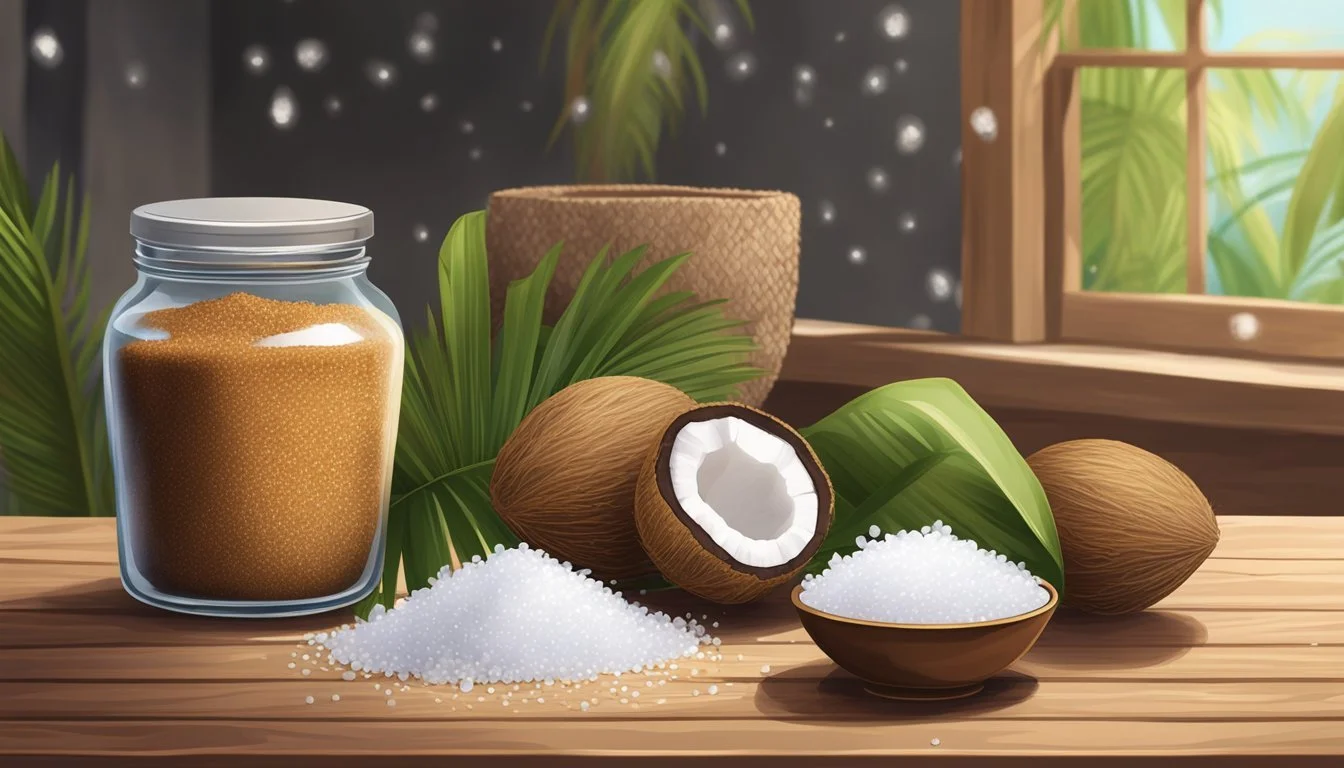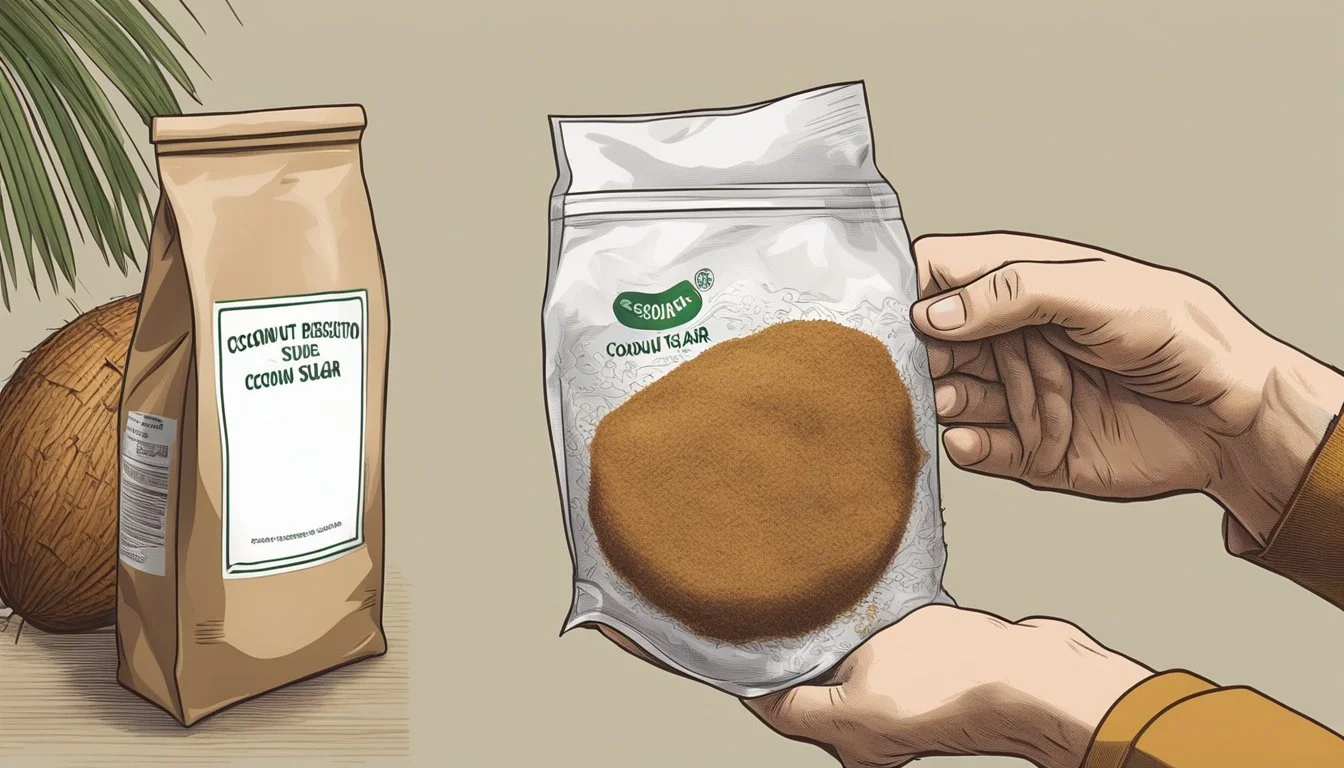Does Coconut Sugar Go Bad?
Shelf Life and Storage Tips
Coconut sugar, derived from the sap of the coconut palm tree, is a popular natural sweetener known for its potential health benefits and low glycemic index. Many people wonder if coconut sugar goes bad, especially when considering long-term storage. Coconut sugar, like other granulated sugars, does not easily spoil and can last indefinitely if stored properly.
To ensure the best quality, coconut sugar should be kept in a cool, dark place away from moisture and sunlight. Improper storage can cause the sugar to harden or form clumps, but it remains usable. For those mindful of their blood sugar levels, coconut sugar's glycemic index of 54 makes it a preferable alternative to conventional table sugar.
Whether using it for baking or sweetening beverages, coconut sugar offers a versatile option that fits well into a variety of diets. Proper storage techniques are essential to maintain its quality, making it a reliable pantry staple.
Understanding Coconut Sugar
Coconut sugar, derived from the sap of coconut palm trees, is often marketed as a healthier alternative to refined sugars. This sugar not only boasts natural sweetness but also retains some essential minerals and vitamins, contributing to its nutritional content.
Origin and Production
Coconut sugar stems from the sap of the coconut palm tree. Farmers harvest this sap by cutting into the flower buds of the tree, allowing the sap to flow out. The sap is collected and then heated until water evaporates, leaving behind granulated coconut sugar. This process is similar to that of producing maple syrup but with coconut palm trees.
Nutritional Profile
Coconut sugar contains small amounts of iron, zinc, calcium, and potassium, making it a more natural sweetener compared to refined sugar. For instance, one teaspoon of coconut sugar provides:
18 calories
0 grams of protein
0 grams of fat
It also includes inulin, a type of soluble fiber that can help manage blood sugar levels. The glycemic index (GI) of coconut sugar is approximately 54, which is lower than that of table sugar, making it a preferred option for some people with diabetes.
Health Implications
Coconut sugar's lower glycemic index suggests a slower rise in blood sugar levels compared to refined sugar, potentially reducing the risk of heart disease and aiding in better management of diabetes. However, it is still a type of sugar and should be consumed in moderation. While it does offer natural sweetness and some nutritional benefits, it is not a health food and should be part of a balanced diet.
It is important for consumers to remember that despite its slight advantages over refined sugar, its caloric content is similar, and excessive consumption could negate its benefits.
Shelf Life and Proper Storage
Coconut sugar has a relatively long shelf life, but its quality can be affected by storage conditions. Proper storage helps to maintain its consistency and freshness, ensuring it remains usable for an extended period.
Ideal Storage Conditions
To maximize the shelf life of coconut sugar, it should be stored in a cool, dry place. The temperature range between 60°F and 75°F is ideal for preventing moisture absorption and clumping.
An airtight container is highly recommended to keep out air, humidity, and any contaminants.
Storing coconut sugar in a dark cupboard or pantry away from direct sunlight is also essential to preserving its quality. Low moisture content and protection from heat and air help maintain its consistency.
Factors Affecting Shelf Life
Several factors can impact the shelf life of coconut sugar.
Moisture is a significant concern as it can cause clumping and even mold growth. Ensuring the sugar stays dry is crucial.
Temperature fluctuations and exposure to humidity can accelerate spoilage. The best storage practice involves placing the sugar in a consistent environment without frequent changes in temperature or humidity levels.
Heat and sunlight can degrade the quality of coconut sugar, so it’s important to store it away from these elements. Using an airtight container minimizes risks related to air and moisture exposure.
Expiration and Signs of Spoilage
While coconut sugar can last up to two years when stored properly, it is vital to watch for signs of spoilage.
Clumping is often a sign that the sugar has been exposed to moisture, but it doesn’t necessarily render it unusable.
Texture changes and becoming rock-hard can also occur but can typically be remedied by breaking it up.
Discoloration and the presence of mold growth are clear indicators that the coconut sugar has spoiled and should be discarded. Checking for these signs regularly ensures that the sugar remains fresh and safe to consume.
Using Coconut Sugar
Coconut sugar offers a natural, caramel-like flavor making it a versatile choice for both cooking and baking. As a substitute for refined sugars, it provides a less processed option that fits seamlessly into many recipes.
In Cooking and Baking
Coconut sugar is used in a variety of recipes, adding a unique depth of flavor. It works well in baked goods like cookies, cakes, and muffins, enhancing their taste with its subtle caramel-like sweetness.
When cooking, it can be incorporated into sauces, marinades, and glazes, providing a delicious balance of sweetness. Coconut sugar dissolves readily, which makes it suitable for beverages such as coffee or tea, giving them a natural sweetness.
It's important to note that while coconut sugar can replace white or brown sugar in recipes, it's best used in recipes where its unique flavor complements the other ingredients.
As a Substitute for Refined Sugars
Coconut sugar serves as a healthier alternative to traditional refined sugars. It contains more nutrients due to being less processed. The inulin fiber in coconut sugar can help to reduce blood sugar spikes, making it a more stable sweetener option.
When substituting coconut sugar for refined sugars like white or brown sugar, it's typically used in a 1:1 ratio. This simplicity means you can update your favorite recipes easily.
Be mindful of its slightly lower glycemic index, which may be beneficial for those managing their blood sugar levels. Whether you’re preparing baked goods or sweetening beverages, coconut sugar provides a natural, versatile solution that fits a wide range of dietary preferences.
Dealing with Spoiled Coconut Sugar
To manage spoiled coconut sugar effectively, it's crucial to recognize signs of spoilage and take steps to prevent and address it. Details on identifying and handling spoiled coconut sugar are provided below.
Identifying Spoilage
Spoiled coconut sugar can be identified by various signs. Clumps form when the sugar absorbs moisture, altering its texture. Unusual odors indicate potential contamination or mold growth. Color changes may occur due to oxidation or contaminants. Texture changes also signal spoilage. If any of these signs appear, the sugar may not be safe to consume.
In case of mold or a foul smell, it is best to discard the sugar immediately. Although it might still be possible to repurpose the sugar, it is crucial to ensure it is safe to consume beforehand by thoroughly examining these indicators.
Prevention and Remediation
Proper storage can help prevent spoilage of coconut sugar. Keep it in an airtight container to minimize exposure to moisture and other contaminants. Store it in a cool, dry place to prevent oxidation and preserve its taste and color. Using natural preservatives can also extend its shelf life.
If the sugar forms clumps, break them into granules using a utensil. Reconstituting hard sugar involves exposing it to a controlled amount of heat to soften it without exposing it to open air. Regularly check for any signs of spoilage to ensure that the sugar remains suitable for consumption.
Additional Considerations
Proper storage of coconut sugar extends its shelf life and maintains its quality. In particular, techniques for preserving coconut sugar and the potential impacts of improper storage practices need careful attention.
Preservation Techniques
Preserving coconut sugar effectively requires specific storage conditions. Keeping it in an airtight container is crucial to prevent moisture absorption. Cooling the storage area to temperatures between 60°F to 75°F helps maintain its integrity.
Storing coconut sugar in a cool, dry place evokes the preservation of its natural qualities and reduces the risk of clumping. Glass jars provide an ideal storage environment, eliminating exposure to contaminants. While coconut sugar doesn't usually require refrigeration, ensuring a consistent temperature is beneficial.
For long-term storage, consider freezing the coconut sugar. Freezing minimizes bacterial growth and mold formation, which can cause spoilage. Always use a vacuum-sealed or moisture-proof bag to maintain freshness during freezing.
Impact of Improper Storage
Improper storage can lead to significant deterioration of coconut sugar quality. Exposure to moisture and air promotes clumping and can introduce mold and bacteria, rendering the sugar unsafe for use.
Without an airtight container, coconut sugar can absorb odors from other foods in the kitchen, affecting its taste. Improperly stored sugar may become rancid, displaying a strange odor or discoloration, indicating spoilage. Insects and bugs are also a risk when storage is not adequately sealed.
Keeping coconut sugar at high temperatures, especially near a microwave or stove, accelerates spoilage due to the heat. Maintaining a clean storage environment devoid of contaminants is essential to avoid foodborne illnesses.
Purchasing and Identifying Quality Coconut Sugar
When selecting coconut sugar, it is important to focus on certain quality indicators and proper storage practices to ensure freshness and longevity.
Quality Indicators
Texture: Quality coconut sugar should have a consistent, granulated texture. Avoid products that feel too coarse or have noticeable clumps, which might indicate exposure to moisture.
Color and Flavor: Look for a golden-brown color with a hint of caramel-like aroma. A dark or uneven color can suggest impurities or inferior processing methods.
Natural and Organic Labels: Choose coconut sugar labeled as "organic" and "natural," indicating fewer preservatives and chemical additives. This often ensures a product free from unwanted chemicals and enhances the natural sweetness and low glycemic index benefits.
Freshness Dates: Check expiration or best-by dates to gauge freshness. Even though coconut sugar can last a long time if stored properly, fresher products generally maintain better texture and flavor.
Storage Tips upon Purchase
Airtight Containers: Immediately upon purchase, transfer coconut sugar into an airtight container. This helps protect it from moisture, which can cause clumping and spoilage.
Cool and Dry Places: Store the container in a cool, dry place like a cupboard or pantry. Avoid locations with fluctuating temperatures and high humidity to preserve the sugar's quality.
Re-Sealable Bags: If the original package includes a re-sealable feature, ensure it is securely closed after every use to maintain freshness.
Avoid Direct Sunlight: Keep the container out of direct sunlight to prevent any degradation in flavor and color that can occur from prolonged exposure to light.






